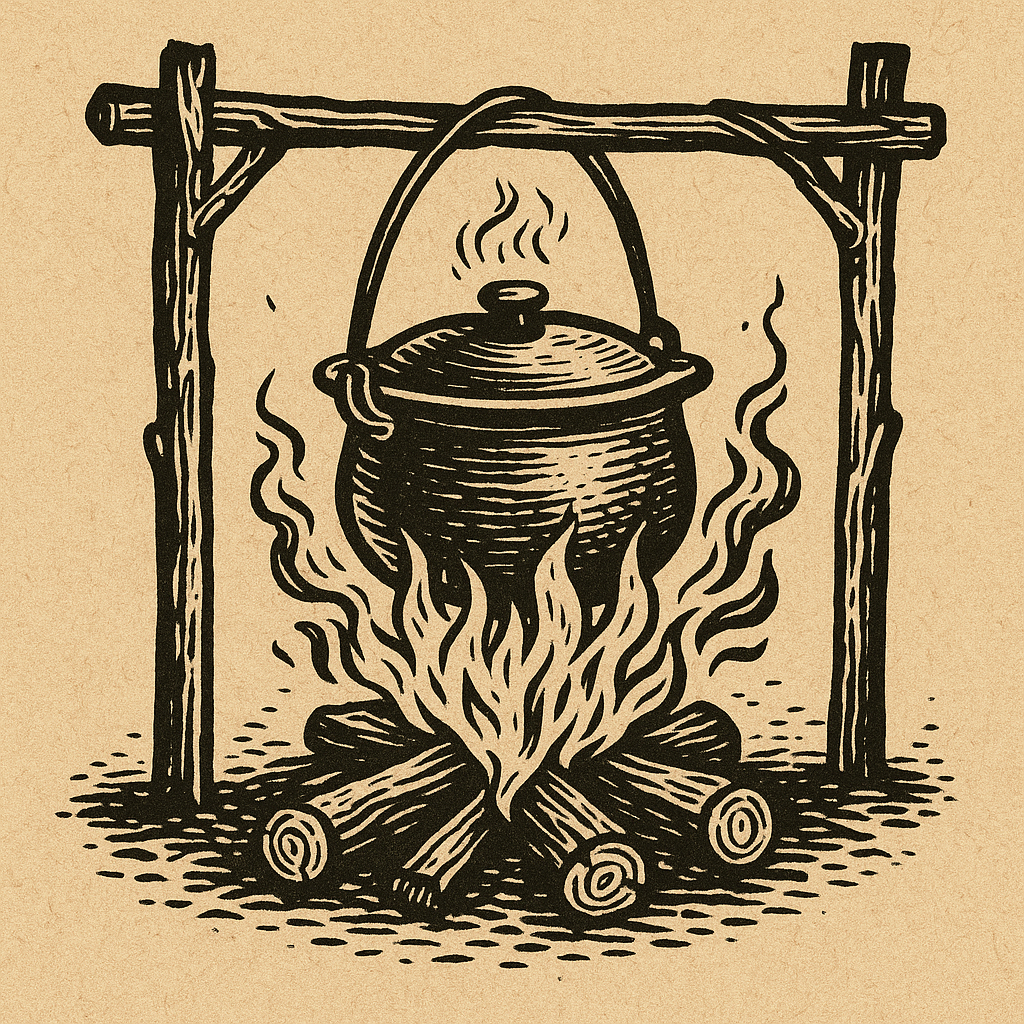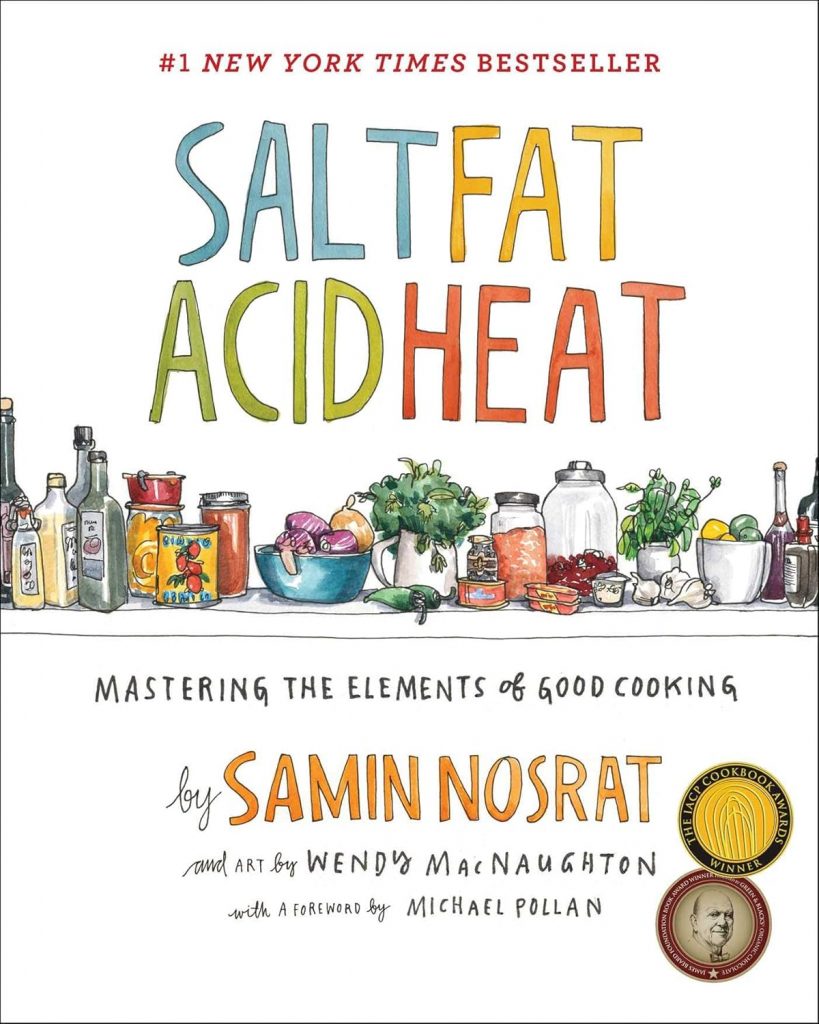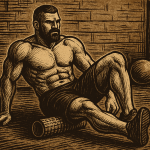You’ve just finished 12 rounds of bodyweight hell. Drenched in sweat. Your kettlebell is still rocking from that last set of Turkish get-ups. Maybe you got wrist-locked by a guy named Jorge in open mat and now your elbow feels like it owes someone rent.
You stumble into your kitchen. You’re starving. And the only thing in your fridge is sadness: half a protein bar, a bottle of mustard, and a Tupperware of guilt. No plan. No flavor. No dignity.
That’s where this post begins.
Cooking: The Lost Savage Art
We’ve become soft. Not because we don’t train hard, but because too many of us outsource our survival. We swipe on apps to find dinner, just like we swipe on apps to find love. Convenience has become a sedative. A microwave is not a rite of passage. And Uber Eats is not a tribe elder.
Learning to cook is more than a domestic skill. It’s freedom. It’s strength. It’s the art of feeding yourself—and your people—with dignity and flavor. It’s also how you actually support that training regimen without living on boiled chicken and despair.
Which brings us to Samin Nosrat’s Salt, Fat, Acid, Heat.
The Holy Quadruple: Salt, Fat, Acid, Heat
Samin’s book isn’t just a cookbook. It’s a culinary awakening. A Rosetta Stone for the kitchen. It doesn’t ask you to memorize recipes—it teaches you to think like a cook. She breaks flavor and technique down into four primal forces that, once understood, let you freestyle with the confidence of a jazz musician in a cast-iron kitchen.
1. Salt — The Amplifier
Salt isn’t just seasoning. Salt is transformation. It pulls water, tightens proteins, and heightens every other flavor in the dish. Used properly, salt can make bland beans taste like something your grandmother might hum over.
Nosrat teaches you when to salt (hint: not just right before serving), and how much (usually more than you think, unless you eat like a scared cat).
Training Angle: Salt supports electrolyte balance. If you’re sweating buckets during BJJ rolls or burpee marathons, your food needs more than a spritz of lemon water. It needs proper seasoning. Taste, yes—but function too.
2. Fat — The Texture Boss
Fat makes food feel good. It carries flavor. It adds richness. It crisps things up. A humble cabbage sautéed in ghee? Now we’re talking. Nosrat shows you how to choose and use fat: olive oil for depth, butter for velvet, animal fat when you want your food to grow chest hair.
She explains how fat affects texture and flavor delivery. Fat is mood. Fat is style.
Training Angle: Good fats (olive oil, avocado, fatty fish) fuel brain health, hormone balance, and recovery. Stop being afraid of fat. You are not a frightened squirrel.
3. Acid — The Balancer
Acid is the unexpected hero. Vinegar, citrus, wine, fermented madness. Acid cuts through richness, wakes up your palate, and makes flavors sing. It’s the reason a squeeze of lime transforms a dead taco into a street sermon.
Samin explains how to balance a dish with acidity, and when to add it (often at the end, like a punchline).
Training Angle: Acidic foods like fermented veggies support gut health. Gut health means better digestion, nutrient absorption, immune strength. Not glamorous, but necessary—like sleep or flossing.
4. Heat — The Alchemist
Heat changes everything. It makes a raw egg custard. It makes sinewy cuts of meat fall apart in gratitude. Samin demystifies the types of heat—dry, moist, gentle, aggressive—and explains how to match cooking method to ingredient.
It’s the difference between burnt salmon and the kind that flakes like snow falling off a mountain peak.
Training Angle: Mastering heat means mastering prep. And when you cook in bulk, you can meal-prep for the week without losing your soul to plastic containers.
Who Is Samin Nosrat, Anyway?
Samin is a chef, writer, teacher, and full-on culinary sorceress. Her journey started at Chez Panisse (Alice Waters’ temple of taste) and ended up changing how the world thinks about food. She’s Iranian-American, which explains the obsession with both bold flavors and communal tables.
She doesn’t lecture. She teaches with joy. Her Netflix show is worth watching. Her book is worth reading. Her vibe is “let’s learn together,” not “let me flex my soufflé.”
A Savage-Friendly Recipe: Roasted Chicken That Hits Like a Right Hook
Let’s apply the four elements to something simple, primal, and deeply satisfying: roast chicken thighs with crispy skin and lemony punch.
Ingredients
- 4 bone-in, skin-on chicken thighs
- Kosher salt
- Olive oil or butter
- Juice of 1 lemon
- Crushed garlic (2 cloves)
- Black pepper
- Fresh herbs (optional: rosemary, thyme)
Steps
- Salt the chicken a few hours ahead (or overnight). This dry brine changes everything. Salt penetrates and seasons deep.
- Rub with fat—olive oil or butter—right before cooking.
- Preheat oven to 425°F. Roast thighs skin-side up for 35–40 minutes.
- Halfway through, toss in garlic and herbs.
- Finish with a splash of lemon juice for acidity.
- Let rest. Devour with roasted sweet potatoes or wild rice.
Simple. Unstoppable. Even cold, it slaps.
Why Cooking Matters More Than Ever
When you cook:
- You eat better
- You train stronger
- You spend less
- You connect more
The dinner table is still the best podcast studio in town. It’s still the best church. It’s where stories are passed and relationships deepen. It’s also where your kids learn that broccoli can taste like triumph instead of punishment.
Cooking for others is an act of service. Cooking for yourself is an act of self-respect.
Final Thoughts (Hold the Garnish)
In a world obsessed with optimization, Salt, Fat, Acid, Heat is a reminder that flavor still matters. That cooking is a human act, not a life hack. That performance and pleasure can share a plate.
Get this book. Read it. Use it. Live it.
Then next time you’re sore from grappling or burpees, you’ll walk into your kitchen—not lost, but grinning. Pan hot. Salt ready. Flavor locked and loaded.
And dinner? Dinner will be glorious.







Comments by The Dapper Savage